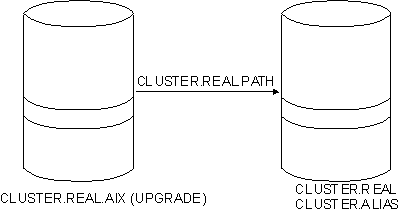 z/OS DFSMS Using Data Sets
z/OS DFSMS Using Data Sets
 z/OS DFSMS Using Data Sets
z/OS DFSMS Using Data Sets
|
Previous topic |
Next topic |
Contents |
Contact z/OS |
Library |
PDF
Data Set Name Sharing z/OS DFSMS Using Data Sets SC23-6855-00 |
|
|
Data set name sharing is established by the ACB option (MACRF=DSN). To understand DSN sharing, you must understand a sphere and the base of the sphere and how they function. Spheres. A sphere is a VSAM cluster and its associated data sets. The cluster is originally defined with the access method services ALLOCATE command, the DEFINE CLUSTER command, or through JCL. The most common use of the sphere is to open a single cluster. The base of the sphere is the cluster itself. When opening a path (which is the relationship between an alternate index and base cluster) the base of the sphere is again the base cluster. Opening the alternate index as a data set results in the alternate index becoming the base of the sphere. In Figure 1, DSN is specified for each ACB, and output processing is specified. Figure 1. Relationship Between the Base Cluster and the Alternate Index
 Connected Spheres. VSAM connects an ACB to an existing control block structure for data set name sharing only when the base of the sphere is the same for both ACBs. The following three OPEN statements show how information is added to a single control block structure, permitting data set name sharing.
If you add a fourth statement, the base of the sphere changes, and multiple control block structures are created for the alternate index CLUSTER.REAL.AIX: 4. OPEN ACB=(CLUSTER.REAL.AIX)



|
 Copyright IBM Corporation 1990, 2014 Copyright IBM Corporation 1990, 2014 |